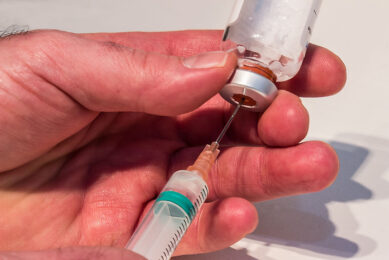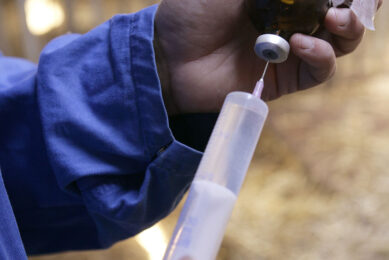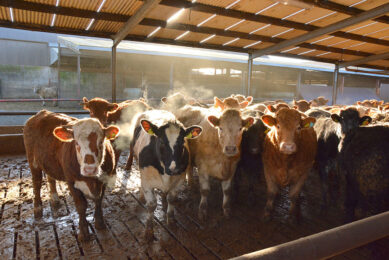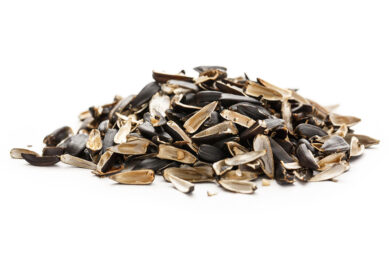Feed additives and their relationship with antibiotics
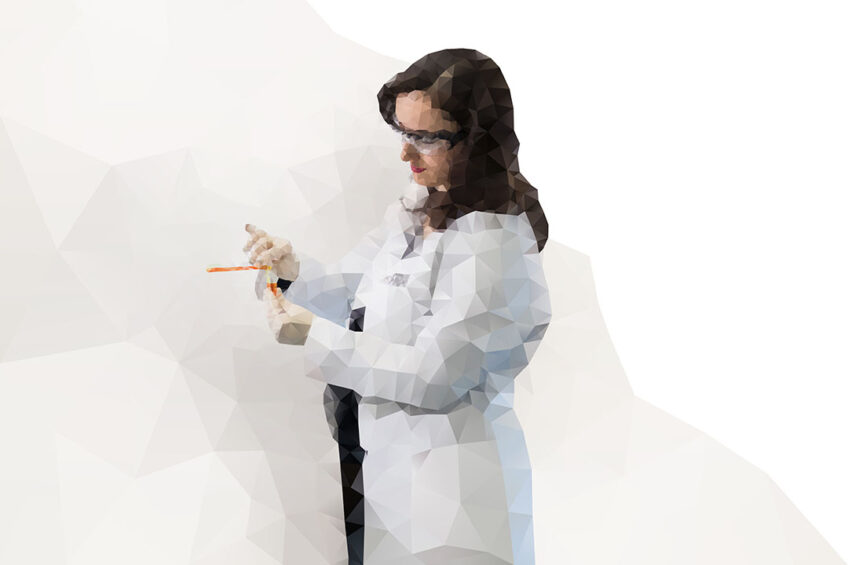
The use of preventive antibiotics has now been banned in many countries. However, in the search for effective alternatives, we must first return to the mode of action of antibiotics. How can we use this knowledge to maintain growth performance and health of our animals?
First, let us take a closer look at antibiotics used for growth promotion (AGPs). Understanding how AGPs function is likely to deliver critical information towards the development of alternatives. Current evidence has led to two primary hypotheses: a bacteria-centric mode of action and a host-centric mode of action.
Bacteria-centric mode of action
AGPs, inhibit or kill bacteria by disturbing essential cell processes, like inhibiting the synthesis of bacterial cell wall and proteins, damaging the outer cell membrane, inhibiting of nucleic acid synthesis, and interfering in the bacterial metabolism. By killing pathogens, AGPs modulate the intestinal microbiota, thereby altering the competition for nutrients. As more nutrients and energy become available for the host, growth and feed efficiency are improved. In addition, colonisation of pathogenic bacteria in the gut is prevented, which significantly reduces the risk of infections.
Host-centric mode of action
AGPs reduce inflammation and seem suppress an over-reaction of the animal’s innate immune system. As such a reaction is very costly in terms of energy, any reduction of immunological stress, allows more resources to be used for processes such as growth.
The downside of AGPs
Being a therapeutic drug, AGPs control diseases to a certain extent. But at the same time, they mask sub-clinical diseases and dampen signs of infections. This may cause infections to spread unseen. Although the use of AGPs has enabled farms to improve production and productivity in intensive production systems, concerns about residues and cross-resistance of pathogenic bacterial strains in people have risen, causing a complete ban of AGPs in the EU in 2006. Other countries will follow. Figure 1 shows the most used AGPs. A preference for bambermycins and bacitracin is seen. These especially target pathogenic Gram-positive bacteria, while Tylosin, the third most used AGP, has a broad spectrum of activity against Gram-positive organisms and a limited range of Gram-negative organisms (World Organisation for Animal Health, 2020).
<iframe class=”localfocusvisual” frameborder=”0″ style=”width:100%;height:400px;overflow:hidden” src=”https://localfocuswidgets.net/61cdcde66e2e2″></iframe>
Glycerides are powerful alternatives
It is suggested that monolaurin, one of the most studied glycerides, can replace frequently used AGPs in pig and poultry farming. Based on the results of the Brazilian study of Fortuoso and colleagues (2019) monolaurin in the diet of broilers showed potent antimicrobial effects and a growth promoting capacity. A better overall intestinal health allows young broilers to efficient absorb nutrients and to achieve a higher end weight. Also, its potent anti-inflammatory action is expected to play a significant role. Researchers expect monolaurin to reduce the release of macrophages producing pro-inflammatory cytokines. These cytokines cause tissues damage when produced in excess and increase the energy expenditure, causing a lower feed efficiency in farm animals
What exactly are these glycerides?
Glycerides are esters produced from glycerol and fatty acids by the dedicated production process of FRAmelco. Alpha-monoglycerides consist of one fatty acid attached to the first position of the glycerol backbone, e.g. lauric acid plus glycerol gives alpha-monolaurin. This unique molecular structure is responsible for their powerful anti-pathogenic activity and is known to be much stronger compared to the corresponding free fatty acids. Furthermore, they are pH independent and are therefore able to be active in the entire gastro-intestinal tract.
No bacterial resistance against glycerides
Already in 1996 research confirmed that monocaprin and monolaurin did not develop resistance to Helicobacter pylori strains, while it did against antibiotics metronidazole and tetracycline. In 2012 Schlievert and Peterson also showed that over the entire year of testing, no alpha-monolaurin resistant Staphylococcus aureus strains were obtained. The multiple modes of action are hypothesised to be the reason why it is hard for bacteria to mutate and become resistant to alpha-monoglycerides.
Generating evidence from practice
FRAmelco put science to the test by doing research at commercial broiler farms. One experiment showed a promising alternative to a classic antibiotic programme from hatchery until finish. This alternative relied on a combination of glycerides of lauric acid and tributyrin in the feed, and the supplementation of short chain fatty acid glycerides via drinking water. A key part of this strategies’ preventive character is that glyceride concentrations are gradually reduced over time. This allows the animal’s immune system to build up to its maximal potential at an early age, so it can rely on it later in life. This specific glyceride-programme allowed to replace antibiotics completely maintaining the same excellent results in animal performance and survival.
In a second trial, the effects from using Zinc Bacitracin and a product based on monolaurin, FRA C12, were compared. Zinc Bacitracin and FRA C12 both improved body weight gain. When looking at the individual effects, FRA C12 had a bigger impact on body weight compared to Zinc Bacitracin, substantiated by a better feed efficiency.
A look at the impact on villi height simply explains this difference. Monolaurin supported the development of a higher absorption surface of the gut wall, whereas a prolonged administration of antibiotics erodes the gut morphology. This leaves the animal with a reduced absorption capacity for nutrients, requiring it to eat more to maximise its growth. Under the conditions of this trial, it was possible to completely replace the need for antibiotics by using monolaurin in a preventive way.
Therapeutic tool
It can be concluded that antibiotics are necessary as curative tool to treat infections and diseases. As antibiotic resistance is a still topic of concern, glycerides could play a crucial role in the strategy to reduce and replace AGPs as these glycerides control pathogens, modulate the immune response, and increase intestinal health.



